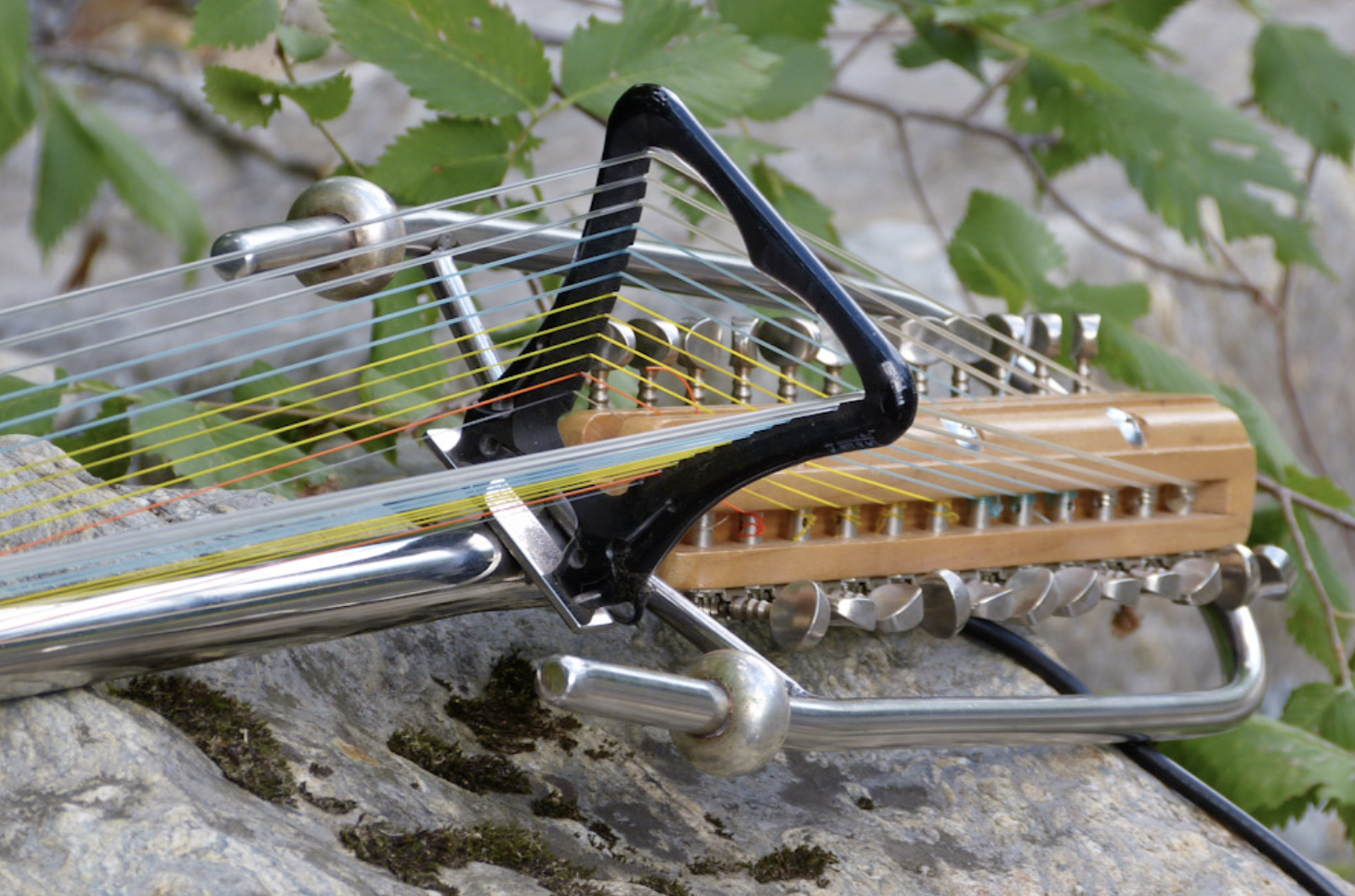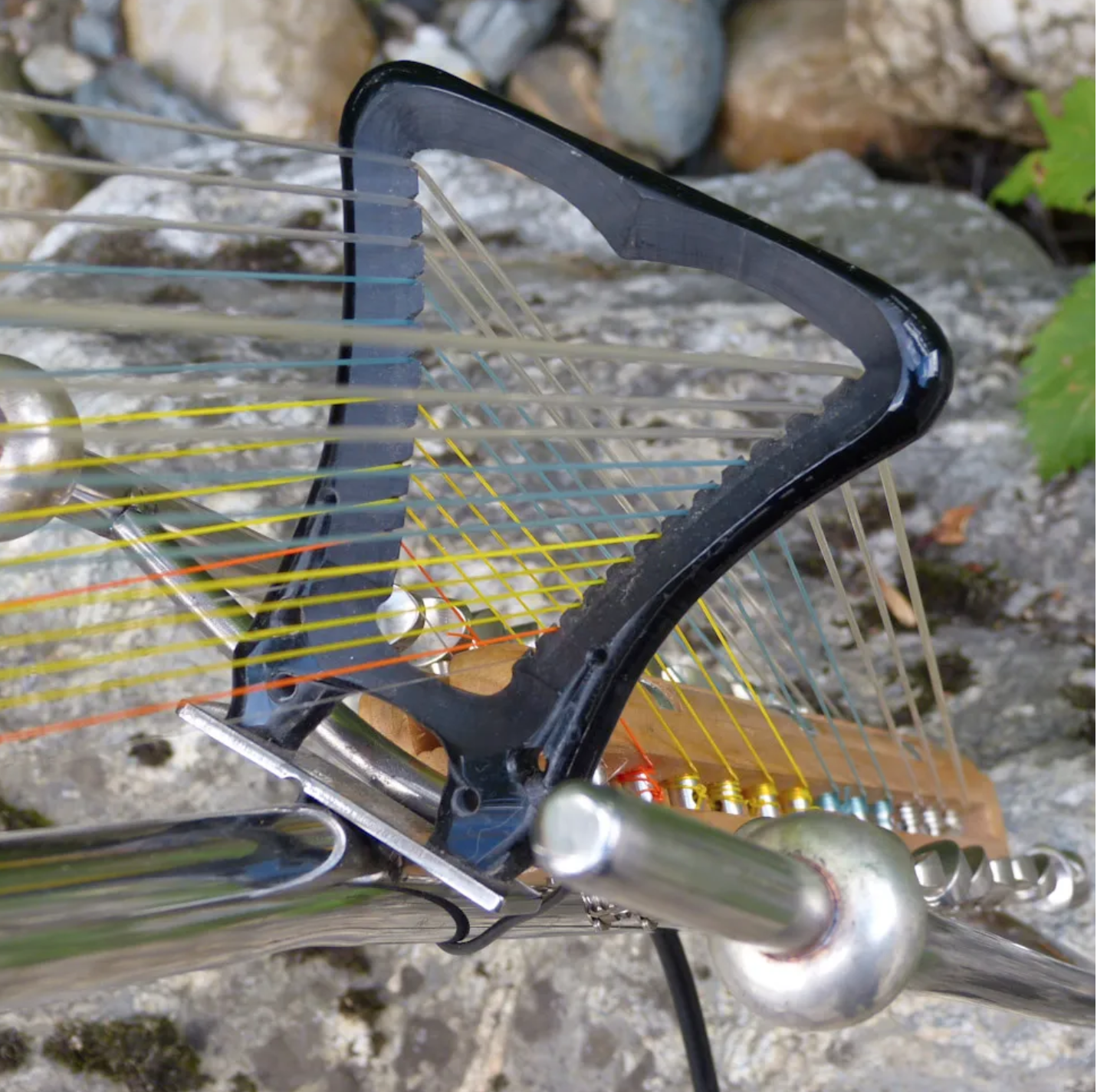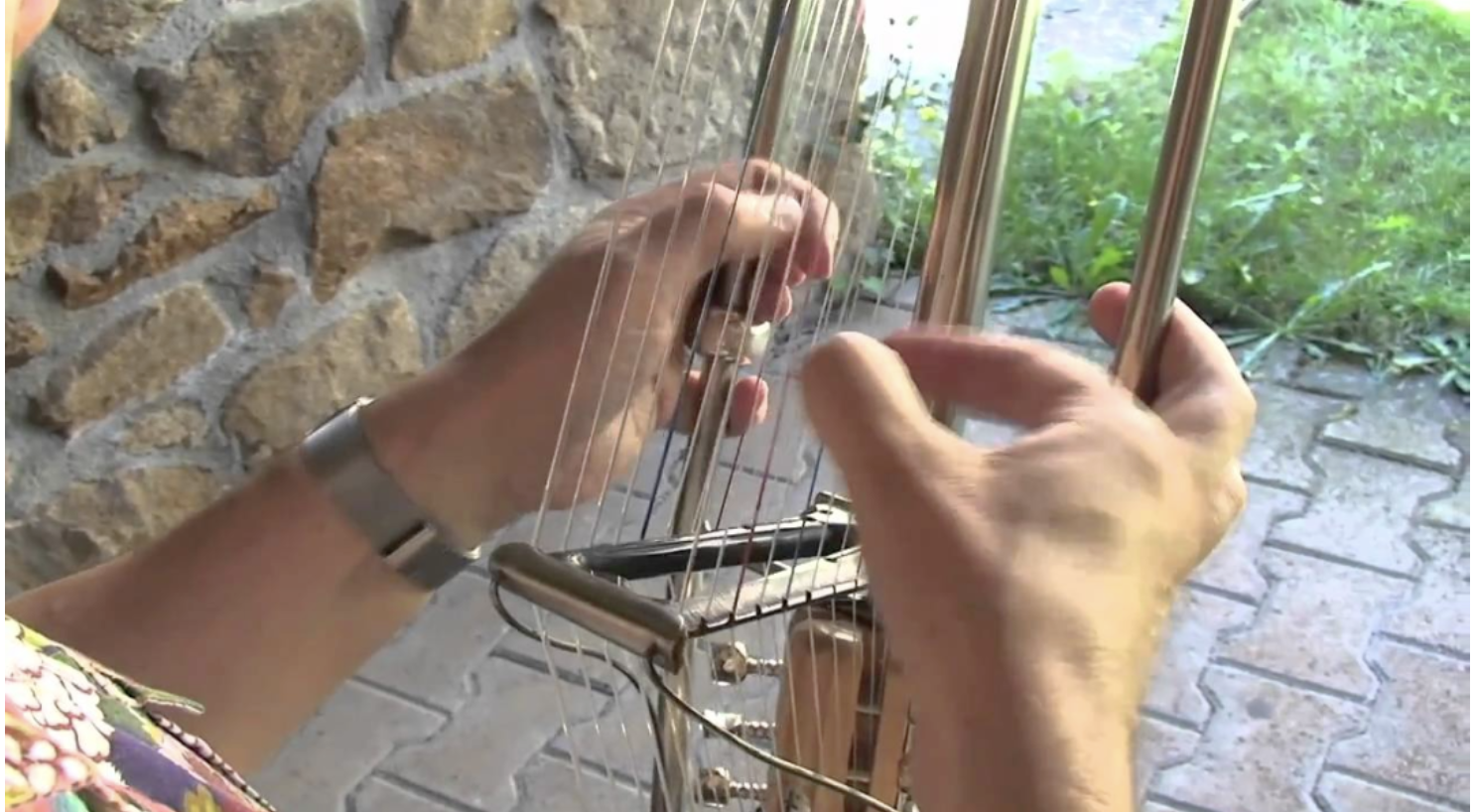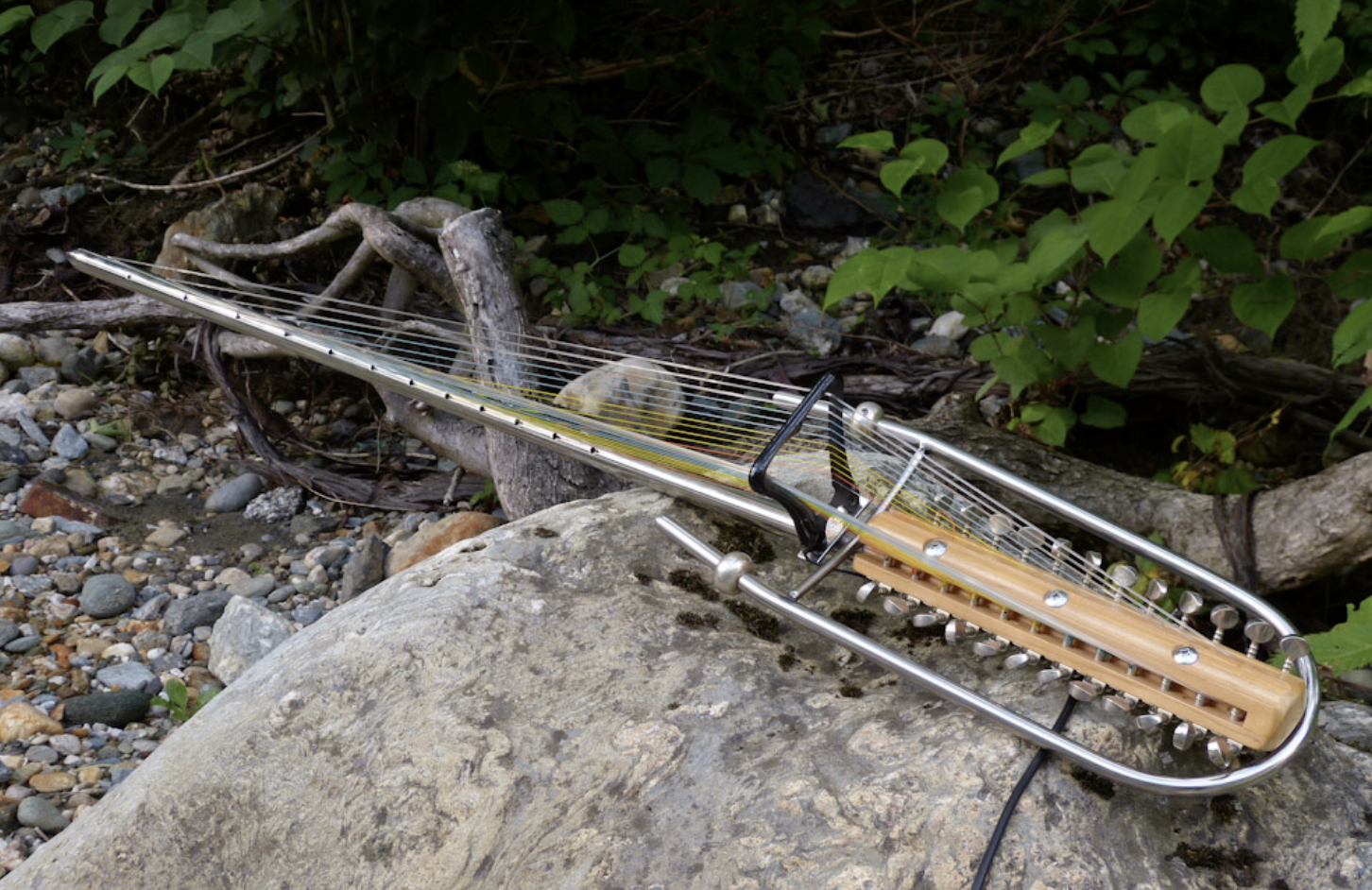Electric twin-bridge Harp - Gravikord, a 24-string electric twin-bridge harp invented in 1984

The Gravikord is based on the West African kora. It is made of welded stainless steel tubing, with 24 nylon strings but no resonating gourd or skin. The bridge is made from a machined synthetic material with an integral piezo-electric sensor. There are two handles located in elevation near the middle of the bridge. The bridge is curved to follow the arc of a strum from the hands which hold the shortened raised handles directly in the palms.A metal crossbar at the top of the bridge functions as a mechanical tone control and bridge stabilizer. The instrument connects to an amplifier like an electric guitar.

The playing technique is similar to that of the kora: the player plucks the strings with the thumb and index finger of each hand. Because each hand can play "with" or "against" each other, simple techniques can produce music of great rhythmic complexity. However, the tuning of the Gravikord is not the same as a kora, and playing techniques are not directly compatible.

Because of the deep cultural significance of cross-rhythms to sub-Saharan African music, several instruments from there have been designed to more easily generate cross-rhythms. Instruments such as the kora, donso ngoni, and mbira organize the notes in a uniquely divided alternate array, rather than the linear bass to treble structure common to many western instruments.

On these instruments, both hands can play freely across the entire tonal range of the instrument, rather than one hand being primarily in the bass and the other in the treble. Also, the fingers of each hand can play independent rhythmic patterns, which can easily cross over from treble to bass and back, either smoothly or with varying amounts of syncopation. This can all be done within the same tight tonal range, without the left and right hand fingers ever physically encountering each other. These simple rhythms will produce complex cross-rhythms including repeating on beat/off beat pattern shifts that would be very difficult to create by any other means. This characteristically African structure allows simple playing techniques to combine, producing polyrhythmic music of great beauty and complexity.
Grawi originally desired an instrument on which he could play polyrhythms more easily than on the guitar, and he refined the Gravikord's design over several years to meet this goal.
The first prototype, made in 1974, was acoustic, and had a bamboo and fiberglass basket resonator with an animal skin head and a large bamboo neck. These first Gravikords already differed from the kora by having the tuning mechanisms removed from the neck and placed at the base, and an extensively re-designed bridge which also incorporated a kalimba that could be played simultaneously with the strings.
Their tuning also differed, as they had 25 strings that were tuned symmetrically using a variation of the Hugh Tracey kalimba tuning system. Grawi made several unique prototypes during this period using wood, aluminum, and other materials, with features including stereo output and variable pitch,and finally patented the Gravikord in 1984.In the finished Gravikord, the body is made entirely of welded stainless steel tubing. There is no resonator; the tones of the twenty-four strings are amplified by a piezo-electric pickup in the bridge, and the instrument is made for natural and comfortable playing in a sitting or standing position.